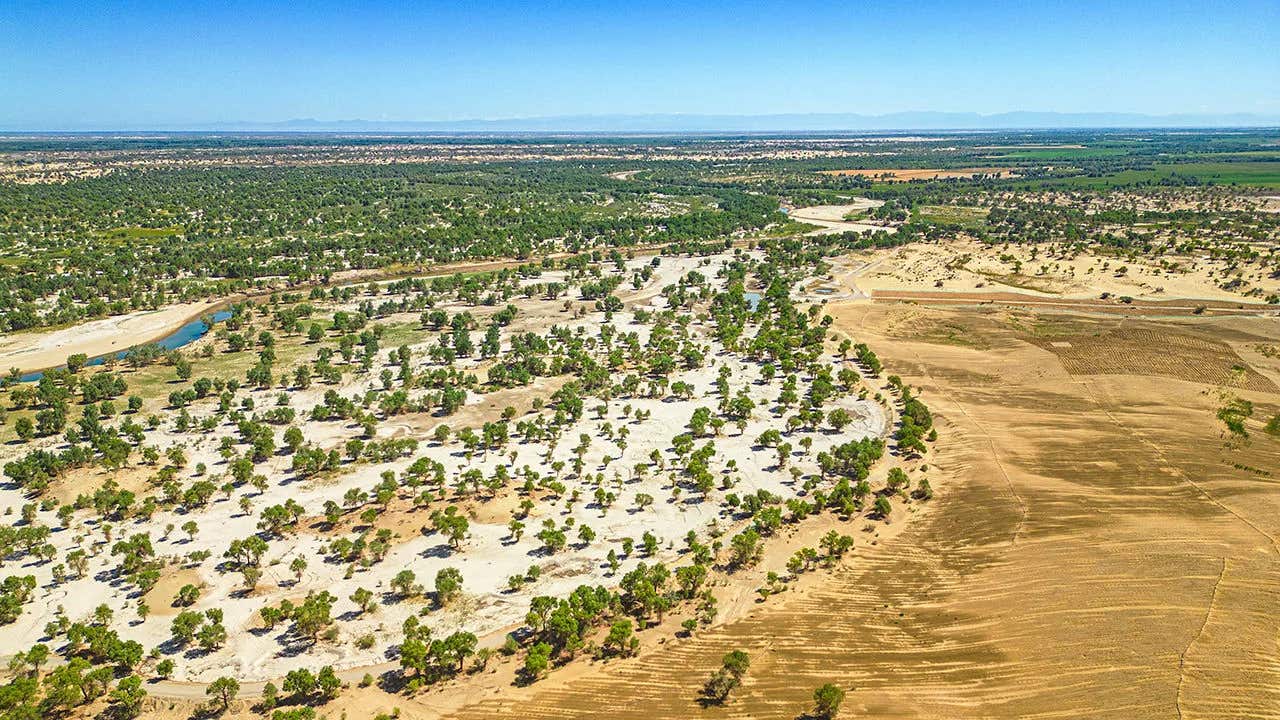The Green Great Wall: China’s 47 year effort at combating climate and land degradation
Since 1978, China has led an environmental campaign of historic proportions to combat desertification in its dry northern lands.

Over the past 72 years, China’s Green Great Wall has turned vast stretches of desert into flourishing ecosystems, tackling both desertification and rural poverty. (CREDIT: Getty Images)
Since 1978, China has led an environmental campaign of historic proportions to combat desertification in its dry northern lands. This colossal effort, known as the Three-North Shelterbelt Program—or the "Green Great Wall"—ranks among the largest ecological restoration projects ever attempted.
Stretching across the northeast, north, and northwest, the project was crafted to shield farms, cities, and ecosystems from the relentless advance of desert sands. With deserts growing each year, the need for a protective green barrier became urgent.
The program spans 13 provinces and blankets more than 4 million square kilometers. Its ambitious goal is clear: lift forest coverage from just 5% in 1978 to a healthy 15% by 2050. Early results showed strong momentum.
By mid-2020, officials announced that forest coverage had already topped 10%, a major step forward in the long road to recovery. Each planted tree pushes China closer to its vision of a greener, more resilient landscape.
A Multi-Phased Approach
The project unfolds in three distinct phases: 1978–2000, 2001–2020, and 2021–2050. By 2020, more than 30 million hectares of trees had been planted, creating a living shield about 3,000 kilometers long around major deserts like the vast Taklamakan in Xinjiang.
The "Green Great Wall" is not just about planting trees. Teams have tested hardy species like poplars that can withstand dry climates, pairing them with clever water-diversion techniques to boost survival rates and growth.
Beyond greening the land, the program supports broader goals like fighting poverty and boosting food security. Local communities gain from forestry-based industries and better agricultural yields, weaving economic hope into the fabric of environmental renewal.
Related Stories
According to Chinese authorities, forest and fruit-related industries have lifted millions of people out of poverty while stabilizing communities vulnerable to harsh desert conditions.
Tackling Environmental Challenges
Northern China’s arid and semi-arid regions have long faced severe wind erosion and land degradation, exacerbated by unsustainable agricultural practices and climate variability. Historically, the land's low resilience to natural and human-induced stress resulted in massive desertification, threatening nearly 200 million lives by the mid-20th century.
In the 1950s and 1960s, early afforestation attempts failed due to inadequate planning. Shelterbelts were poorly designed, with little understanding of soil composition or water availability. By 1978, the shortcomings of these efforts prompted the Chinese government to initiate the scientifically informed TNSP.
The program's success is evident in improved grain yields and reduced soil erosion. Enhanced forest cover mitigates dust storms, a common threat to urban areas like Beijing. Despite these achievements, challenges remain.
Nearly 27% of China’s land is still classified as desertified, only slightly reduced from 27.2% a decade ago. Some critics argue that tree survival rates are low, and the program has yet to significantly curb the intensity of sandstorms.
Global Recognition and Collaboration
The TNSP aligns with several international initiatives, including the United Nations’ Sustainable Development Goals (SDGs). It addresses SDG 13 (Climate Action) and SDG 15 (Life on Land) by improving ecosystem resilience and reversing land degradation. The program also contributes to poverty alleviation goals (SDG 1) by creating economic opportunities through forestry.
These efforts have earned global praise. In 1994, the United Nations Environment Programme recognized the TNSP with its “Global 500” award. International collaboration continues to play a pivotal role, with public and private sectors working alongside local and global partners to bolster afforestation efforts. The program exemplifies how large-scale ecological engineering can align with socio-economic progress.
Looking forward, China plans to expand forest coverage to 14% and enhance forest stock volumes to 260 million cubic meters by 2050. Key strategies include improving tree survival rates through better species selection and adaptive planting methods.
Restoration projects, such as the poplar forests around the Taklamakan desert, rely on innovative floodwater diversion techniques to sustain growth in arid regions.
While desertification persists as a critical issue, incremental gains showcase the program's potential. For example, Xinjiang's forest coverage has risen from 1% to 5% over four decades, providing critical buffers against expanding deserts.
These efforts illustrate how a combination of ecological science, policy innovation, and community participation can tackle global environmental challenges.
Critics highlight the need for rigorous evaluations to ensure the program achieves its stated goals. Although claims of reduced desertification and fewer dust storms are supported by government reports, independent assessments remain sparse. Scientists urge long-term monitoring and data transparency to quantify the program's true impact.
A Model for Global Sustainability
China’s afforestation efforts offer valuable lessons for other nations grappling with land degradation. The integration of environmental, social, and economic strategies underscores the importance of holistic approaches to sustainable development.
Despite its challenges, the TNSP stands as a monumental example of ecological engineering, proving that even the most daunting environmental threats can be addressed with innovation and persistence.
As the world faces escalating climate challenges, initiatives like the TNSP remind us that solutions are possible—if governments, communities, and international partners come together with a shared commitment to protecting our planet.
Note: Materials provided above by The Brighter Side of News. Content may be edited for style and length.
Like these kind of feel good stories? Get The Brighter Side of News' newsletter.
Ultra-low-energy defibrillation



